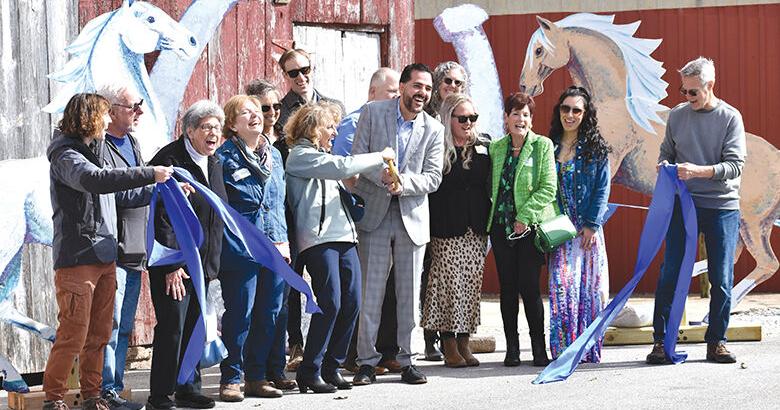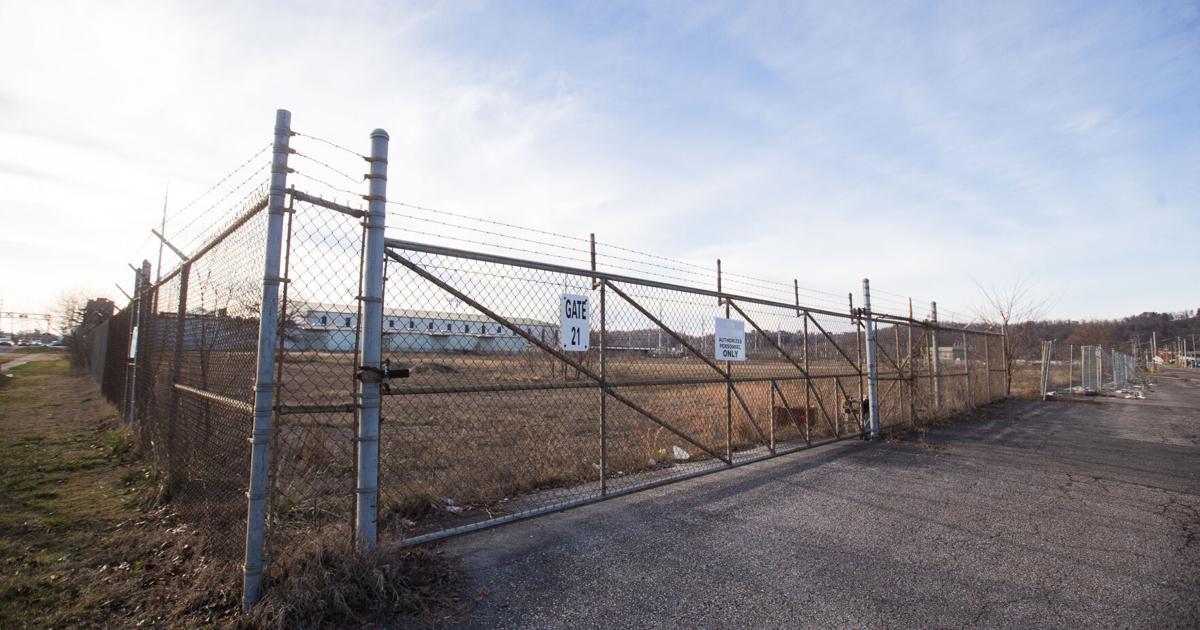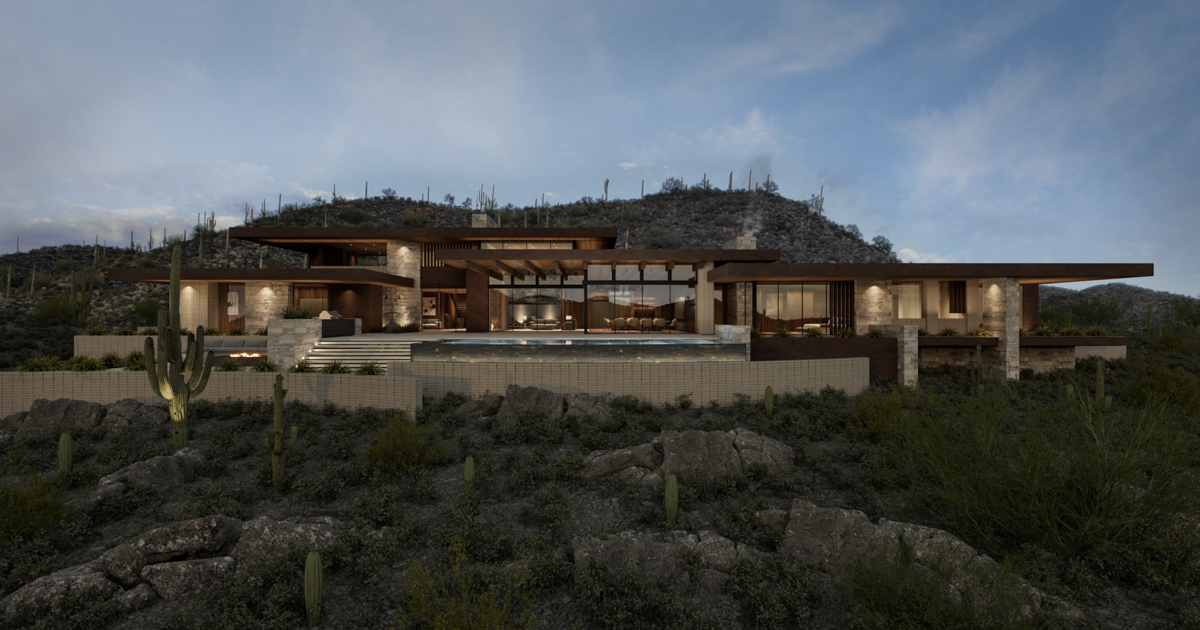Alyssa Luc and her partner Xuan Tri Mai are among many Australians who wish they hadn’t rushed into building a home.
It was the end of 2020 when the couple purchased a block of land in Catherine Field, a growth area suburb south-west of Sydney.
Their block cost about $500,000, and they spent another $700,000 to enter a contract with what they thought was a reputable volume builder.
The couple moved into their new home in July 2023 and, just days in, Ms Luc says they started finding alleged defects, starting with a blockage in their toilet.
“If anyone would like to go build a new house, please think carefully,” Ms Luc warns.
“Think about the economy … think about the builders at the moment.
“I mean, they [people] can see that so many builders [have] collapsed in the past few years. They should know now that the industry is vulnerable.”
It was supposed to be the end of what building industry pundits have labelled as a “property cyclone”.
But even if the eye of that cyclone has passed, savage storms continue to wreak havoc on Australia’s $270 billion construction sector.

Each month across Australia, on average more than 200 building and construction companies go under.
The building industry is still reeling from one of its most tumultuous periods in history — a loss-making boom that eventuated soon after the pandemic.
Consumers — lured with tens of thousands of dollars of grants under the controversial HomeBuilder scheme — were sold on fixed-price contracts that builders then struggled to honour as the cost of building materials and labour soared.
The effects of that are still playing out.
Call to better protect subcontractors and consumers
Statistics from corporate watchdog ASIC show that for the current financial year so far, to March 17, there have been 1,987 insolvencies in the building industry. This is up from 1,495 a year earlier and just 782 in 2022.
More horror stories are emerging of subcontractors and suppliers waiting to get paid but at risk of never seeing a cent, and consumers left with half-built homes or major defects.
“With the [Home Builder grant] stimulation, we went from a very low point to boom time, and we weren’t ready for that big upswing,” says industry veteran and the founder and director of Satterley Property Group, Nigel Satterley.

The Perth developer has worked in the industry for more than 50 years, including advising governments on housing policies, and sees better times ahead.
“We have moved out of the cyclone — I really believe the worst is over.”
But while consumers are back making enquiries about building a home, Australia’s volume builders warn many remain nervous about signing on the dotted line.
They say consumers are holding back both because of high-interest rates and cost-of-living increases, as well as fears they might end up with a dodgy product or a builder that’s at imminent risk of collapse.
Mr Satterley is calling for a fundamental rethink of laws regulating the industry so that subcontractors and consumers are better protected.
“We need a lot more corporate regulation around directors that trade — the building companies — that know they can’t pay the bills, or they’re insolvent,” Mr Satterley says.
“For example, you could start ‘John Smith Homes’ with working capital of $200,000, and be building 500 homes a year, because these are what we call capital-light businesses that run on cashflow. And when the cash flow stops, they go bust.”
Some builders are asking customers up-front for deposits of 5 per cent or more.
Mr Satterley suggests these be placed into a regulated trust account, which already happens in the case of developers, but usually not with builders.
“If you [the builder] takes money from the trust account, you go to jail,” he says.
“I think these types of regulations need to be [implemented] across the home building industry.”
Another issue politicians constantly raise with him is how to better protect subcontractors in the industry.
“I think there should be serious regulation [if a contractor] is not paid,” Mr Satterley suggests.
“Our industry pays on the 15th and the 30th, generally of the month, so give a couple of days, if they’re not paid, they should be able to lodge an immediate complaint for protection.”
He also believes governments should do more to help build the pipeline of skilled workers needed to meet greater housing demand over the next few years.
‘It’s been very stressful’
Ms Luc agrees there are not enough consumer protections and, to try to get a resolution, they’ve had to use the legal system.
Her main concern, especially while she’s been pregnant, has been finding traces of silica dust throughout her home.

Silica dust can be toxic. It’s commonly used to make products across the home, especially for stone benchtops in kitchens and bathrooms.
Safe Work Australia says that when workers cut, drill or grind products that contain silica, dust particles are generated that are small enough to lodge deep in the lungs and cause serious illness or disease.
It’s been such a big issue impacting workers in the industry that, at the end of last year, Australia became the first country in the world to ban the use of engineered stone following a surge in workers developing lung disease silicosis.
Ms Luc says they had an expert do a report for them that suggests that traces of the dust they have been finding throughout their home may be dangerous to their health.
“We did ask them [the building company] to come out immediately because of health concerns — and so far, we’ve only had people come out to do cleaning,” she says.
Ms Luc says there are also other alleged defects around the home, and she’s lodged a complaint against the building company that will be heard by a tribunal.
“[It’s been] very stressful — it took a lot out of me. It takes a lot out of both of us. Mentally I try to be strong for myself, for the family and my baby.”
Fears of a ‘catastrophic failure’
Even for those who don’t build, but buy off the plan or opt for homes that have been recently built, significant problems have emerged.
Toplace was once one of Australia’s largest privately owned development and construction companies, which claimed to have built 30,000 properties across Sydney.
But the developer went into administration in July 2023, owing hundreds of millions to creditors, and its founder Jean Nassif went overseas despite being wanted on fraud-related charges.
The owner and founding director of the Toplace Group building licence was suspended for 10 years in 2023 by NSW Fair Trading and Toplace’s licence was permanently revoked.
IT worker Patrick Quintal says his life has been destroyed by buying into one of Toplace’s troubled developments – Vicinity Apartments in Canterbury, in Sydney’s inner south-west.

When asked if people should buy off-the-plan or newly-built apartments, he says: “Don’t. Just don’t do it, you are playing Russian roulette with your life basically.
“In fact, I think you might actually have better odds playing Russian roulette than this.
“It is crazy how poorly the government is ensuring people can actually safely buy property. You’re expected to be a lawyer, the building engineer, all of that on top of your nine-to-five job. It’s draining.”
Mr Quintal purchased a unit with his wife in May 2021 for $685,000 but now may be up for hundreds of thousands of dollars more to fix serious defects.
Within months of moving in Mr Quintal had an engineer do an expert report, which he says described the entire building as a “death trap”.
A report from the NSW Building Commissioner identified major issues with the slab and beams in the basement of Vicinity Apartments.
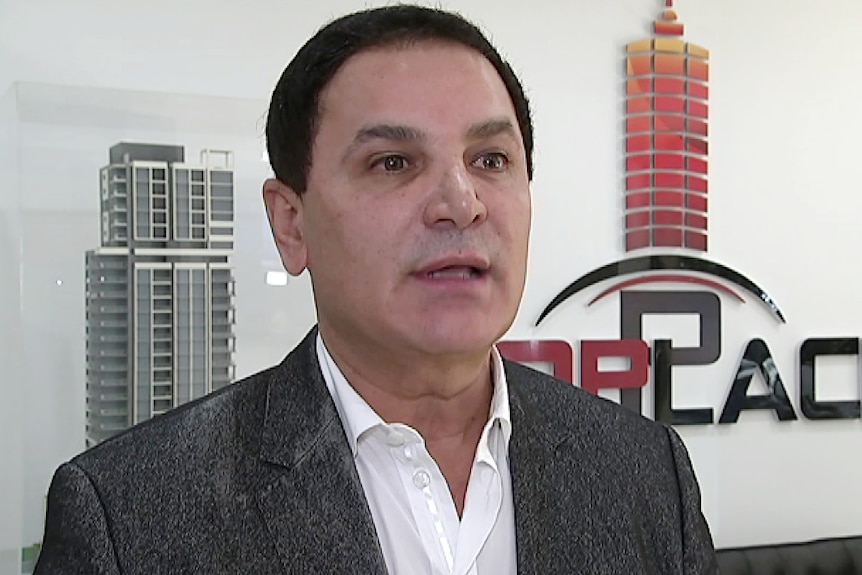
Mr Quintal says the entire building is now being held up by temporary steel structures and worries with increased building activity around the area — including a metro station – the whole structure could one day collapse.
“It’s not really safe,” Mr Quintal says.
“The building as it stands, could not support any kind of movement that was similar to a seismic activity. [It could mean] catastrophic failure … resulting in the building basically collapsing.”
Mr Quintal is still fighting for the council or government to pay the cost of fixing the defects, but in the meantime says he’s financially and emotionally devastated.
The Department of Fair Trading has estimated the total cost of the repairs to be about $50 million.
With 276 units, that means owners like Mr Quintal are looking at a cost of at least $180,000 each, but possibly more as construction costs remain elevated and time drags on.
At the same time, he says quarterly strata levies have jumped from $900 a month to about $4,000.
“For me, the financials are quite, quite dire,” Mr Quintal says.
“We were planning on having a family shortly after we got the place. And I feel like I’ve just been in such a mental rut that I don’t think I could afford to have kids, or whether I’m even mentally ready to have kids simply because I have to deal with the stress of this building, day-in day-out.”

Mr Quintal says the onus shouldn’t be on the owners to fix defects that weren’t of their doing. He also wants the law changed to better protect consumers.
“My hope is that the government will come in and take responsibility for basically the issues that they’ve created,” he says.
“It’s not just this building. It’s many apartments that we’ve seen over the last couple of years … They’ve all got similar problems.”
New home builds in decline as the cost of building rises
The quality of building is one issue that’s kept consumers wary of taking the leap into building.
The soaring cost of building is another. Metricon chief executive Brad Duggan says the builder is still working through a pipeline of post-pandemic boom loss-making jobs, but when it comes to getting people to commit to new home builds, now things are much tougher.
In 2022, Metricon was in financial crisis talks but was thrown a lifeline from its financier the Commonwealth Bank, which kept it from facing the same fate as many other builders.
Mr Duggan says there’s been a 40 per cent increase in enquiries from would-be buyers this year but that a “lack of confidence” is holding people back from signing a contract.
“There’s such pent-up demand [but] people don’t want to take that step [of signing the contract],” Mr Duggan says.
“It [the fear to sign a contract] comes from two places, one lack of confidence about the affordability, and also a lack of confidence in building.”

Mr Duggan hopes the RBA will soon signal when they will be cutting interest rates so that more would-be buyers will take the leap into building.
However, he also warns that building costs could go even higher now that changes to the National Construction Code, designed to make more homes energy-efficient and accessible, have taken force.
New requirements under the code include increasing minimum energy-efficiency standards for new houses and apartments from six to seven-star ratings, and more stringent accessibility standards, including step-free entry to dwellings, a toilet on the entry level, accessible doorways, and reinforced bathroom walls.
The Housing Industry Association says these changes could increase the cost of building by about $20,000 to $25,000, depending on the type of build.
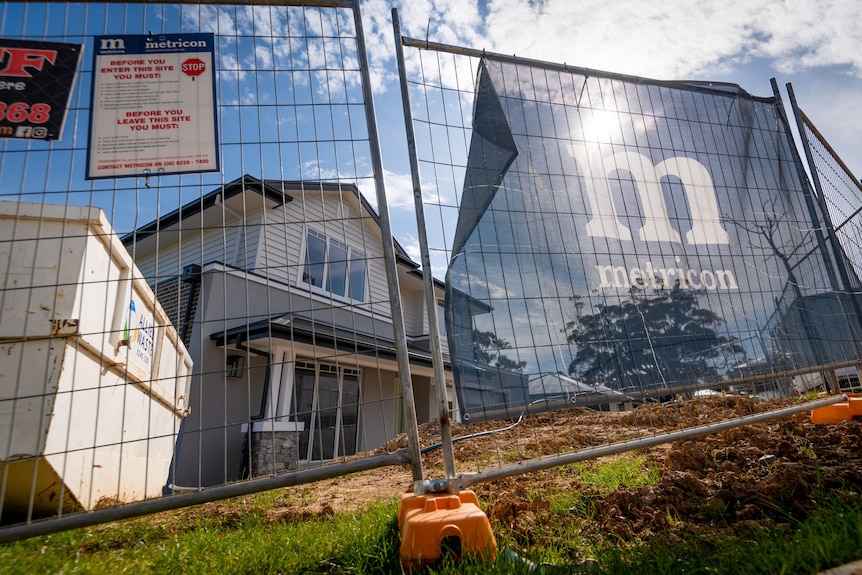
While Metricon generally supports the new NCC requirements, Mr Duggan questions “whether it’s the right time to be looking at it now”, while there’s a housing affordability crisis.
“It won’t be an insignificant [price] increase.
“I think there’ll be a number of builders that may not be able to go to market because they don’t have NCC compliant homes, which may mean that there is a lack of supply for the market, which could have some impact (on supply).”
Not enough workers to build 1.2 million homes
Australian Bureau of Statistics (ABS) data shows Australia’s record level of immigration is easily outpacing new construction.
The ABS latest building approvals data released on Thursday, found that total dwellings approved in February fell by 1.9 per cent, to 12,520.
Attached dwellings drove the decline, down 24.9 per cent to 3,771. This was the weakest monthly result since 2012.
Total dwelling approvals are running at 163,099 annualised, a level well below Australia’s underlying dwelling requirement.
As demand for housing increases, the industry warns there are just not enough workers to build the 1.2 million homes (about 240,000 dwellings a year) the Albanese government wants to see built over the next five years.
There are industry estimates this target requires an increase in the building trades workforce of 90,000 people, but Mr Satterley believes it might be even more.
“Australia can only complete, annually, around 130,000 dwellings per annum, maybe just a few more,” says Mr Satterley.
“What the prime minister is saying he wants is 200,000 completions a year, that is impossible to do.
“We would need somewhere in the order of 400,000 qualified tradesmen this calendar year, and next year.”
But as baby boomers leave the industry, there are fewer young people coming in to learn trades.
Data from Master Builders suggests that over the year to September 2023, a total of 42,333 new apprentices started in the building and construction industry — this represents a 25 per cent reduction on the previous 12-month period.

“This country is being held back through not enough people to do the work,” Mr Satterley argues.
“And what we’re seeing is the tradespeople are making more money and working less. So production is slower because the tradies are working less hours for more money.”
Will more builders go under and job losses rise?
Insolvencies in the building and construction industry are predicted to continue to spike over the coming months and overtake pre-COVID highs and possibly even top post-global financial crisis highs.
That will mean more job losses.
HIA’s managing director Jocelyn Martin says she feels for those consumers who are left with those half-built projects when builders collapse, but it’s been hard for builders to manage cash flow.
“There are no winners out of the insolvency situation,” Ms Martin says.

“One of the biggest challenges we have in the industry is working with fixed price contracts — where the builders have had to lock in price for their customers, well in advance of supply of supplies, and then supply prices have increased.”
She hopes there will be fewer horror stories going forward, noting that there are already “changes happening” in the way the building industry is regulated.
“I think there is an improved regulatory system,” she says.
“There are certainly more detailed inspections around properties. There is much education for builders, in terms of repercussions for builders that have gone broke or into administration.”
The building and construction industry remains one of Australia’s largest employers, employing roughly 1.3 million Australians.
And, despite the calls for more workers in the sector, there have already been job losses off the back of failed building companies.
Others have had to take pre-emptive action and announce redundancies.
It was almost one year ago when Simonds Homes boss Rhett Simonds had to make the tough decision to cut 10 per cent of the company’s workforce.
“You’re going through and you’re adjusting to economic environments, those hard calls have to be made,” Mr Simonds tells ABC News.

The family-run builder’s decision to cut costs has paid off.
Simonds Homes, which is now listed on the ASX, earlier this year delivered a $100,000 quarterly profit, its first step into the black in two years.
“Let’s not deny it has it’s been a tough period for the industry for the last probably two to three years,” Mr Simonds says.
“We are coming through the other side of what has been … a shaky couple of years in the industry.
“As we start to see the stabilisation of interest rates and ultimately, hopefully, down the track, some small decreases in interest rates, that’s definitely going to play a major factor in consumer confidence.”
Mr Simonds hopes the industry will be given support, including enough skilled tradesmen, to build the homes needed.
“We do have a housing shortage and that is something that will continue to be a challenge for our economy and our country,” Mr Simonds says.
Ride On St. Louis has found a permanent home after flooding forced the equine-assisted service program from its home at the Anheuser Estate in Kimmswick five years ago.
The nonprofit organization, which offers equine therapy to children and adults with disabilities, will move its operation to a 27-acre property at 9000 Grab Lane off Sandy Valley Acres Drive northeast of Hillsboro it purchased for about $745,000, said Stephanie Stark, Ride On’s campaign committee adviser.
On March 15, the organization, which was formed in 1998, held a ribbon-cutting and blessing ceremony at its “forever home” with about 35 supporters in attendance.
However, it will be months before staff members and the horses can move there, Stark said.
Marita Wassman, Ride On’s CEO and co-founder, said more fundraising and renovations are needed before the organization may transition to its new home.
She hopes that will happen later this year but until then, services will remain at the group’s leased interim site at 8499 Byrnesville Road in Cedar Hill.
According to the group’s website, approximately $800,000 of the $1.3 million needed for the relocation project has been secured so far.
In addition to acquiring and renovating the property for the organization’s new home, the $1.3 million would provide funds to add staff and expand services, as well as for an endowment.
Stark said the renovations are needed to make it safe for children and adults with disabilities to ride horses at the new property.
She said the property will be ADA (Americans with Disabilities) compliant and PATH (Professional Association of Therapeutic Horsemanship) compliant.
The fields need to be sectioned off and enclosed with about 5,915 feet of fencing. An old barn will be demolished and another will be renovated for six stalls and work areas. Plans also call for a classroom, restroom facilities and parking, Wassman said.
“Additionally, immediate plans include replacing many of the existing wood beams and foundation posts in the barn,” according to the group’s website. “To date, a small structure has already been demolished and removed from the property, and the future barn/stable existing structure has been gutted and prepared for utility updates and grading.”
After the group lost the property in Kimmswick in 2019, the COVID-19 pandemic struck, so most of the therapy staff was furloughed, Stark said.
“So what’s included in that $1.3 million is restaffing the entire organization to be able to provide services, not only for existing participants but also for the (116 people) who are currently on the waiting list for services,” she said.
“We anticipate transitioning our herd in (the third or fourth quarter) of 2024, with program offerings continuing in a limited capacity based upon our herd’s acclimation,” Wassman said. “We will have additional buildout phases and capital improvement projects beyond 2024.”
Wassman said the organization has volunteer opportunities for skilled laborers, and anyone interested in helping with the cause may visit rideonstl.org or call 636-464-3408.
The next fundraiser will be Denim & Diamonds, a private dinner on April 25 at the Fox Run Golf Course Carriage House in the Jefferson County portion of Eureka. For information, email info@rideonstl.org or call 636-464-3408.
Flooding and COVID
Ride On previously was located on the Anheuser Estate along the Mississippi River in Kimmswick, and the property was first affected by flooding in 2013 and then again in 2015, 2016, 2017 and 2018, said BriAnn Session, Wassman’s daughter, who serves as the group’s grant manager.
“It cost Ride on St. Louis approximately $200,000 after every flood to rebuild all their infrastructure,” Stark said.
Session said after each flood, the organization had to close for about eight months while it rebuilt and sanitized affected areas.
When it first moved from Kimmswick in 2019, a friend with a breeding farm in Illinois allowed Wassman to run the organization’s Barn Buddies program from his property for that year.
In 2020, Ride On St. Louis leased the stable in Cedar Hill.
“Before moving there, we had a lot of work to do,” Session said. “We had to clean the pastures out; they were very overgrown. It was vacant for years. We had to build out stalls and temporary fencing that we can bring with us.”
When COVID shut everything down in March 2020, Session said the group was one of the first to offer a virtual equine services program.
Then, after COVID, the organization provided what services it could in Cedar Hill, but the temporary property was not appropriate for anyone in a wheelchair, which makes up a large percentage of the population the organization serves, Stark said.
Session said the organization put a lot of planning into exactly how the new property needs to flow.
At its peak and before the group moved out of Kimmswick, it was serving 50 clients a week from counties in Missouri and Illinois. Since 1998, it has provided equine-assisted services to more than 2,600 people, and it helped about 270 people last year.
According to its website, Ride On St. Louis relies on private donations, fundraising, volunteer efforts, in-kind gifts and grants.
The median cost of a home in Yellowstone County increased 1.9 percent between 2022 and 2023, a marked decrease from recent years, according to data collected by the Billings Association of Realtors (BAR).
But, after a few years of massive price jumps including a 16.1 percent increase between 2021 and 2022 and 19.2 percent increase between 2020 and 2021, homes were 50 percent more expensive last year than in 2019, with a median price of $367,000.
So far, in 2024, 246 homes have been sold, with a median sales price of $358,950.
According to Bob Leach, a local realtor who tracks housing market data, the median family income in Billings is $72,300, making the affordable price of a home somewhere between $143,700 and $237,000. And that’s with 20 percent down, which few first time home buyers even have.
These days, there isn’t much inventory that falls within that range.
Between 2018 and 2023, there was an 85 percent decrease in homes under $200,000, and a 75 percent decrease in homes between $200,000 and $300,000, according to Leach.
Meanwhile, there was a 51 percent increase in homes between $300,000 and $400,000, a 360 percent increase in homes between $400,000 and $500,000, and a 644 percent increase in homes over $500,000.
Yet last year the market showed signs of cooling. It was the first year since 2021 in which sales prices were lower than list prices. Houses also were on the market for longer, with a median of 16 days on the market, compared with 5 and 6 days for 2021 and 2022 respectively.
And there were just 2,115 homes sold in 2023, the fewest number of homes sold in a year since at least 2018. Home sales are down 30 percent last year compared to 2020, according to Leach.
This is partially due to higher interest rates, according to Mikayla Kovash, President of the Billings Association of Realtors.
“We got used to seeing the four percent interest rate, but historically, seven percent is not a terrifying interest rate,” she said.
Kovash said that if buyers hold out for lower interest rates, they may end up paying more in a more competitive housing market.
“Even if they’re paying a seven to eight percent interest rate today, they may be getting a home for 10 percent less than they would in a lower interest rate market,” she said.
NEW HOMES
An additional 1,122 new housing units were built in Billings last year, including 272 single family homes, 94 duplexes, 62 townhouses, and 687 units in multifamily complexes.
This was more units built than in 2021 and 2022 combined. There were no more than 500 residential building permits per year from 2018 through 2022, though the city averaged 675 new units from 2003-2008.
“We’ve been underbuilding for a long time,” Leach said.
There were 2,670 new housing units built from 2020 through 2023. Of these new homes, 44.6 percent were single family homes and 35.6 percent were in multifamily complexes. The remaining 20 percent were townhouses and duplexes.
The city’s Building Division does not track whether multifamily units are rentals or condos, but Jessica Fust, the department’s director, said the majority are rentals.
This is a cause of concern for Leach, who believes there should be more pathways to home ownership, such as building more “entry level” homes, or homes under 1,400 square feet.
There has been an average of just 39 entry level homes built per year in Billings over the past eight years.
Meanwhile, there are 6,791 households in the city on waitlists for affordable and public housing. This is up from 6,200 on wait lists in 2020, according to a report by the city’s Community Development Division.
“There is a housing deficit of over 4,700 units for households with incomes less than 30% of the AMI [area median income],” the 2020 report reads.
And behind all the markets and development is zoning, or the regulations created by the government about what can be built on a given piece of land. The city overhauled zoning in 2021, the first major update in 40 years.
And yet this past January, City Council passed an initiative to explore 10 new zoning changes, including getting rid of minimum parking requirements and encouraging mixed residential/commercial development.
“There have been big changes in the housing market since recode was adopted,” said Councilman Tom Rupsis, who proposed the initiative.
At the state level, zoning changes to promote development that passed through the legislature last year are facing legal challenges.
“I’m not really of the mindset that we should wait for the state to figure their stuff out,” Rupsis said. “This is us taking fate into our own hands.”
The Catholic Church’s shrinking physical presence in Western New York will get even smaller when the Buffalo Diocese sells off valuable real estate to help settle sex abuse claims.
The diocese, which four years ago today filed for Chapter 11 protection, has identified 22 properties, including its longtime headquarters, it may sell to generate funds toward a settlement of the roughly 900 claims in federal bankruptcy court.
But aside from that development, there’s little indication the diocese is close to reaching a deal with the Official Committee of Unsecured Creditors, which represents about 900 people who said they were sexually abused as children by Catholic priests or other diocese employees.
The bankruptcy case, filed Feb. 28, 2020, already has taken longer to resolve than any other diocese reorganization except for the Archdiocese of Milwaukee’s, which took nearly five years.
People are also reading…
While Buffalo Diocese officials and an attorney for the creditors committee declined to comment on their mediated settlement talks, abuse victims expressed dismay over the pace of negotiations.
“They’re nowhere,” said Kevin Brun, whose 2019 lawsuit alleging the Rev. Arthur Smith molested him when he was a teenager has been stalled in state court due to the bankruptcy. “I’ve been reflecting on how long this bankruptcy process is taking, and my frustration level, it can’t be measured. And I’m sure other survivors – in fact I know other survivors who I’ve spoken to that are extremely frustrated as well.”
The diocese has wracked up nearly $14 million in legal bills, while those who filed abuse claims in bankruptcy court have yet to see a penny.
“I don’t see where the sense of urgency or where the incentive is for these bankruptcy attorneys to settle these cases. I mean, they’re getting paid right along, regardless of what the final outcome is,” said Brun, who also has a claim in the diocese bankruptcy case. “I just don’t think they’re pushing hard enough or negotiating strong enough to bring this to fruition.”
Michael Whalen, who says he was sexually abused by a priest, the Rev. Norbert Orsolits, as a teenager, sits for a portrait at his home in South Buffalo, Feb. 23, 2023.
Michael F. Whalen Jr. said he was hoping Chief Judge Carl L. Bucki of U.S. Bankruptcy Court in the Western District of New York will soon allow at least some Child Victims Act lawsuits to proceed in state court, as a prod for negotiations to move forward.
Bucki decided in January to keep Child Victims Act lawsuits against Catholic parishes and schools on hold until at least April 15.
“It’s just too long. Too many people are passing away,” said Whalen, whose news conference in 2018 alleging abuse by the Rev. Norbert Orsolits led to the unraveling of the diocese’s historical cover-up of clergy sex abuse cases. “I feel sorry for the survivors that have passed and haven’t see closure.”
The diocese’s announcement in court papers last October that it would offer at least $100 million toward a settlement elicited mostly scoffs – both from abuse victims who said it was a paltry amount to address their pain and suffering and from parishioners furious over having to pay for church leadership’s mishandling of abusive clergy.
Properties will be sold
To get there, the diocese will have to sell at least some of its property.
Already on the market is the former Christ the King Seminary, a sprawling campus of 18 buildings on 117 acres in the Town of Aurora, with an asking price of $5.3 million.
Three potential buyers for the property emerged in 2020 after the seminary closed. One was the Masonic Care Community, which was prepared to make a cash offer, according to a trustee. The diocese put off plans for the sale at the time due to demands of the Chapter 11 process. The Masonic Care Community was still interested in the property but also was busy with other projects at the moment, said the trustee, Christopher Hough.
Other diocese properties have yet to be listed but have been named in court papers as likely targets for sales. The most prominent is the Catholic Center, the diocese’s longtime headquarters at 785 and 795 Main St. The five-story former home of the Courier Express newspaper was built in 1929 and has an estimated full market value of $6.7 million, according to City of Buffalo property records.
An Our Lady of Victory administrative building at 780 Ridge Road in Buffalo.
Also on the list of properties to be marketed: three Newman Centers located near university or college campuses in Buffalo, Amherst, and Alfred; three priest retirement homes; a home for expectant mothers and mothers with newborns; a center for families of patients being treated at nearby hospitals; and a large office building in Lackawanna that houses the administrative operations of Our Lady of Victory Charities. About 30 retired priests live in the three homes in Tonawanda, Depew and Lackawanna.
The Catholic Diocese of Buffalo’s priest retirement home at 10 Rosary Avenue in Lackawanna.
Appraisals were conducted last week of the UB Newman Center at 495 Skinnersville Road in Amherst and a condominium on Bristol Drive that’s home to the Rev. Paul D. Seil, UB Newman Center director, Seil said in a weekly newsletter posting on Sunday.
The University at Buffalo Newman Center in Amherst.
“While I have been informed numerous times that the condo will be sold (to help fund the settlement to the victims of clergy abuse and the cover-up), that does not mean the same for the Newman Center!” Seil said in the newsletter. He declined to comment further on Tuesday.
Construction of the UB Newman Center was completed in 2010 at a cost of $2.7 million.
Sales of the properties would further reduce the local Catholic Church’s vast Western New York real estate empire, which has shrunk dramatically over the past 15 years as dozens of churches and elementary schools closed due to declining church attendance and school enrollments and fewer priests.
Through a diocese spokesman, Bishop Michael W. Fisher declined requests to be interviewed for this story. In a video posted Tuesday to the diocese website, he acknowledged that Western New York Catholics “must address the realization that we have more parishes than we need for our Catholic population.”
“The reality is buildings are closing,” said Fisher, “but the church, the people of God, will continue.”
Most recently, All Saints Catholic Church in Buffalo’s Riverside neighborhood and St. Andrew Church and school in the Town of Tonawanda were slated to be closed later this year and will likely be put on the market. While those properties are owned by parishes, which are separate non-profit corporations, their sales ultimately will benefit a settlement trust because the parishes owed the diocese hundreds of thousands of dollars in “assessments,” a regular diocesan tax on weekly offertory collections.
But Fisher also said in his video that the recent closures “are not a direct result of our ongoing Chapter 11 proceedings” and instead were connected to “wider societal trends that span long before our recent problems,” such as migration of local Catholics to other parts of the country, smaller families and people identifying as spiritual but not religious.
The diocese and parishes have discussed additional assessments of all parishes as part of funding a settlement but “no actions have been taken at this time and cannot be taken until the bankruptcy court renders its decision,” he said.
Bucki in January allowed the diocese to hire Hanna Commercial Real Estate as real estate broker for the 22 properties.
“We have the big list, but we’re not authorized to market any of them,” except for the seminary, said William K. Heussler, licensed associate real estate broker with Hanna.
Heussler said his office will be directed by the court about what properties to list and when.
“I don’t know procedurally what they do and how they deem those ready to sell,” he added.
The diocese is required under bankruptcy proceedings to monetize its assets for the purposes of paying its creditors, but it doesn’t necessarily mean that it must sell all properties.
In some instances, a loan may be taken against the value of a property, with the loan proceeds used to pay into a settlement trust.
The 22 properties on the diocese’s revised list do not include five Catholic high school buildings that were part of previous diocese property lists.
Bishop Timon-St. Jude High School in South Buffalo, St. Mary’s High School in Lancaster, Cardinal O’Hara High School in the Town of Tonawanda, Notre Dame High School in Batavia and the former DeSales High School in Lockport, now used as an elementary school, are all owned by the diocese. The schools have operated independently of the diocese for many years, but never took ownership of the buildings.
Instead, they lease the space long term for a nominal fee, with the understanding that they pay for property maintenance, renovations, and upgrades.
This challenge has become more apparent in recent years after the Brexit vote and the pandemic, when investors withdrew their money over fears of a property crash.
By comparison, closed-ended funds such as real estate investment trusts (Reits) do not suffer from a liquidity mismatch, as they have a fixed pool of capital that is not affected by investors buying and selling.
In terms of funds to buy, Ms Admans recommended CT TR Property Trust which is mainly invested in listed property shares, with physical property accounting for a maximum of 15pc of the portfolio.
The geographic split is 25pc to 50pc UK, with the remainder in Europe. It is currently trading at a discount of 7pc to net asset value.
“The manager, Marcus Phayre-Mudge, has deep sector experience and has built up a strong track record of generating income using a differentiated approach to property investing,” Ms Admans added.
John Moore, of wealth manager RBC Brewin Dolphin, recommended PRS Reit which invests in new-build family homes for the private rental market.
“Even though it is one of the scale players in the sector, it only manages 5,000 units, which is a drop in the ocean of [the Government’s] 300,000 per year new homes target – so there is huge room for growth,” he said.
“Yet the share price has not reflected any of that – it trades at a substantial discount to net asset value and offers a yield of more than 4.5pc.”
In addition, Ms Admans tipped Finsbury Global Property and Schroder Global Cities Real Estate. Both are open-ended funds, however they invest in Reits and listed property companies, removing the liquidity risk.
Shares in property companies
There is a chronic shortage of housing in the UK, and it could be wise to invest in companies that are working to address this issue.
Vistry and Persimmon are among the housebuilders who stand to benefit from the pledge to build more housing. Mr Moore said: “There has been a lot of movement in Vistry’s share price since interest rates picked up – even by the sector’s standards.
“But it should be in line to benefit as greater efforts are made to reform the planning system and provide more affordable housing, while offering a yield of nearly 6pc in the meantime.”
Much to the chagrin of would-be homebuyers, property prices just keep rising. It seems nothing — not even the highest mortgage rates in nearly 23 years — can stop the continued climb of home prices.
Prices increased once again in December, according to the National Association of Realtors (NAR), which reports that median existing-home prices were up 4.4% over last year — the sixth month in a row of year-over-year jumps. In another reflection of ongoing increases, the latest S&P CoreLogic Case-Shiller home price index showed a 4.8% jump in October that represented the ninth month in a row of gains.
So much for the idea that a “housing recession” would reverse some of the outsized price gains in homes. The U.S. housing market had finally started slowing in late 2022, and home prices seemed poised for a correction. But a strange thing happened on the way to the housing market crash: Home values started rising again.
NAR data shows that median sale prices of existing homes are near record highs. December 2023’s median of $382,600 is off the all-time-high of $413,800, but not by much, especially for a typically quiet time of year. (Seasonal fluctuations in home prices make June the highest-priced month of most years — the all-time-high was reached in June 2022.) “The housing recession is essentially over,” says Lawrence Yun, NAR’s chief economist.
Home values held steady even as mortgage rates soared to 8% in October 2023, reaching their highest levels in more than 23 years. (They have since dipped back down, falling below 7% in recent weeks.) The main culprit is a lack of housing supply. Inventories remain frustratingly tight, with NAR’s December data showing only a 3.2-month supply.
”You’re not going to see house prices decline,” says Rick Arvielo, head of mortgage firm New American Funding. “There’s just not enough inventory.”
Skylar Olsen, chief economist at Zillow, agrees about the supply-and-demand imbalance. Her latest forecast says home prices will keep rising into 2024 — welcome news for sellers but not so great for first-time buyers struggling to become homeowners. “We’re not in that space where things are suddenly going to be more affordable,” Olsen says.
In fact, the trend is quite the opposite. According to Realtor.com’s December 2023 Housing Market Trends Report, high mortgage rates have increased the monthly cost of financing the typical home (after a 20% down payment) by 6.1% since last year. That equates to $123 more in monthly payments than a buyer last December would have seen.
Mortgage rates fell sharply in late December, a move that boosted affordability. However, lower mortgage rates also are pulling more buyers into the market. “The potential for a decline in mortgage rates intersects with the prime homebuying time of the year — if you can find one to buy, that is,” says Greg McBride, Bankrate’s chief financial analyst.
Taking all this into account, housing economists and analysts agree that any market correction is likely to be a modest one. No one expects price drops on the scale of the declines experienced during the Great Recession.
Is the housing market going to crash?
No. There are still more buyers than sellers, and that means a meaningful price decline can’t happen: “There’s just generally not enough supply,” says Mark Fleming, chief economist at title insurer First American Financial Corporation. “There are more people than housing inventory. It’s Econ 101.”
Dave Liniger, the founder of real estate brokerage RE/MAX, says the sharp rise in mortgage rates has skewed the market. Many would-be buyers have been waiting for rates to drop — but if mortgage rates do decline, it could send new buyers flooding into the market, pushing up home prices.
”You’ve got an entire generation of pent-up demand,” Liniger says. “We’re in this fascinating position of tremendous demand and too little inventory. When interest rates do start to come down, it’ll be another boom-and-bust cycle.”
Back in 2005 to 2007, the U.S. housing market looked downright frothy before home values crashed, with disastrous consequences. When the real estate bubble burst, the global economy plunged into the deepest downturn since the Great Depression. Now that the recent housing boom has been threatened by skyrocketing mortgage rates and a potential recession — Bankrate’s most recent expert survey puts the odds at 45% — buyers and homeowners are asking, when will the housing market crash?
However, housing economists agree that it will not crash: While prices could fall, the decline will not be as severe as the one experienced during the Great Recession. One obvious difference between now and then is that homeowners’ personal balance sheets are much stronger today than they were 15 years ago. The typical homeowner with a mortgage has stellar credit, a ton of home equity and a fixed-rate mortgage locked in at a low rate — in fact, according to Realtor.com’s December report, two-thirds of all current mortgages have rates below the 4% mark.
What’s more, builders remember the Great Recession all too well, and they’ve been cautious about their pace of construction. The result is an ongoing shortage of homes for sale. “We simply don’t have enough inventory,” Yun says. “Will some markets see a price decline? Yes. [But] with the supply not being there, the repeat of a 30% price decline is highly, highly unlikely.”
Existing home prices
Economists have long predicted that the housing market would eventually cool as home values become a victim of their own success. After posting the a year-over-year decrease in February 2023 for the first time in more than a decade, the median sale price of a single-family home is on the rise again, with a 4.4% annual gain in December, according to NAR. That represents the sixth month in a row of year-over-year increases.
Overall, home prices have risen far more quickly than incomes. That affordability squeeze is exacerbated by the fact that mortgage rates have more than doubled since August 2021.
Experts say prices to hold strong
While the housing market is indeed cooling, this slowdown doesn’t look like most real estate downturns. Despite prices being high, the actual volume of home sales has plunged, and inventories of homes for sale have fallen sharply, too. Homeowners who locked in 3% mortgage rates a couple years ago are declining to sell — and who can blame them, with current rates more than double that? — so the supply of homes for sale is even tighter. As a result, the correction will be nothing like the utter collapse of property prices during the Great Recession, when some housing markets experienced a 50% cratering of values.
”We will not have a repeat of the 2008–2012 housing market crash,” Yun said in a statement last fall. “There are no risky subprime mortgages that could implode, nor the combination of a massive oversupply and overproduction of homes.”
Ken H. Johnson, a housing economist at Florida Atlantic University, says the housing market is being pulled in two competing directions. “I think we are in for a period of relatively flat housing price performance around the country as high mortgage rates put downward pressure on prices, while significant demand from household formation and an inventory shortage place upward pressure,” he says. “These forces, for now, should balance each other out.”
5 reasons there will be no housing market crash
Housing economists point to five compelling reasons that no crash is imminent.
Inventories are still very low: A balanced market typically has a 5- or 6-month supply of housing inventory. The National Association of Realtors says there was a 3.2-month supply of homes for sale in December (back in early 2022, that figure was a tiny 1.7-month supply). This ongoing lack of inventory explains why many buyers still have little choice but to bid up prices. and it also indicates that the supply-and-demand equation simply won’t allow a price crash in the near future.
Builders didn’t build quickly enough to meet demand: Homebuilders pulled way back after the last crash, and they never fully ramped up to pre-2007 levels. Now, there’s no way for them to buy land and win regulatory approvals quickly enough to quench demand. While they are building as much as they can, a repeat of the overbuilding of 15 years ago looks unlikely. “The fundamental reason for the run-up in price is heightened demand and a lack of supply,” says McBride. “As builders bring more available homes to market, more homeowners decide to sell and prospective buyers get priced out of the market, supply and demand can come back into balance. It won’t happen overnight.”
Demographic trends are creating new buyers: There’s strong demand for homes on many fronts. Many Americans who already owned homes decided during the pandemic that they needed bigger places, especially with the rise of working from home. Millennials are a huge group and in their prime buying years, and Hispanics are a growing demographic also keen on homeownership.
Lending standards remain strict: In 2007, “liar loans,” in which borrowers didn’t need to document their income, were common. Lenders offered mortgages to just about anyone, regardless of credit history or down payment size. Today, lenders impose tough standards on borrowers — and those who are getting a mortgage overwhelmingly have excellent credit. The median credit score for new mortgage borrowers in the the third quarter of 2023 was an impressive 770, the Federal Reserve Bank of New York says. “If lending standards loosen and we go back to the wild, wild west days of 2004-2006, then that is a whole different animal,” says McBride. “If we start to see prices being bid up by the artificial buying power of loose lending standards, that’s when we worry about a crash.”
Foreclosure activity is muted: In the years after the housing crash, millions of foreclosures flooded the housing market, depressing prices. That’s not the case now. Most homeowners have a comfortable equity cushion in their homes. Lenders weren’t filing default notices during the height of the pandemic, pushing foreclosures to record lows in 2020. and while there has been an uptick in foreclosures since then, it’s nothing like it was.
All of that adds up to a consensus: Yes, home prices are still pushing the bounds of affordability. But no, this boom shouldn’t end in bust.
FAQs
When will the housing market crash?
Actually, most industry experts do not expect it to. Housing economists point to five main reasons that the market will not crash anytime soon: low inventory, lack of new-construction housing, large amounts of new buyers, strict lending standards and fewer foreclosures.
Will housing prices drop anytime soon?
Probably not — or at least, not by much. Home prices did decrease year-over-year for a few months in early 2023, for the first time in more than a decade — but the decrease was relatively modest and prices have since risen sharply, reaching record highs. Greg McBride, Bankrate’s chief financial analyst, says a plateauing of prices is more likely than a steep fall. and some actually expect prices to keep rising: Zillow’s recent Home Value Forecast predicts that home values will increase 2.1% by September 2024.
How much house can I afford?
It depends on many factors, including how much money you earn versus how much you pay out in debts and expenses each month — known as a debt-to-income ratio. Many financial advisers recommend the 28%/36% rule of home affordability, which states that you should spend no more than 28% of your gross monthly income on housing expenses, and no more than 36% on total debt. Bankrate’s home affordability calculator can help you crunch the numbers.
What is a good credit score to buy a house?
Different minimum credit scores are required by lenders for different types of mortgages. However, a score of at least 620 is typically required for a conventional loan — and if it’s as high as 740, all the better. Generally, the higher your credit score the lower the interest rate you will qualify for. Successful borrowers today tend to have outstanding credit, with a high median score of 770.
Could things be about to change in the Charlottesville housing market? Prices are still up, as ever, but sales are down and mortgage rates are coming down with them.
Burroughs
According to fourth-quarter data, last year ended the way it started for the Charlottesville area’s housing market: properties only getting pricier. But the pattern of property values consistently creeping upward may not continue for much longer, as dropping mortgage rates meets a “tremendous amount of pent-up demand” from buyers who have not been able to afford today’s prices, said Anne Burroughs, president of the Charlottesville Area Association of Realtors.
“Our own businesses are seeing a lot of buyers coming out of the woodwork as interest rates move down,” Burroughs told The Daily Progress. “They’re ready to move out because they’ve been looking for a home for the past two years. They’re saying ‘I’ve got to move, I’ve got to get a house.’”
People are also reading…
After almost reaching 8% toward the end of October 2023, mortgage rates began trending down, reaching 6.6% in the third week of January. This figure is less than the 6.66% from the previous week, but still up from where it sat at 6.15% a year ago.
At the height of the pandemic, the federal government lowered mortgage rates more than it had in decades, ranging from 2% to 3%. This resulted in an almost 150% increase in people refinancing their properties, which in turn led to homeowners being less inclined to sell their houses, with mortgage rates almost three times larger than the previous year.
While Burroughs is unable to predict the Federal Reserve’s behavior, she said the agency has been indicating it intends to continue lowering the rate.
“We can’t predict when they’re going to decrease, and we don’t know how much of an impact it will have,” she said. “But it’s going to help ease us out of the lock-in effect of homeownership, because the idea of selling a home after refinancing it at 2% is hard to swallow.”
Burroughs said she believes that if interest rates were to fall into the 5% range, homeowners may feel more comfortable with selling.
“If rates continue to slide down, you have more competition and have more buyers getting off the bench so to speak,” Josh White, president-elect of the regional Realtor association, told The Daily Progress.
White
As for the temperature of the market’s fourth quarter in 2023, sales activity remained cool. In the Charlottesville area, which includes the city as well as the counties of Albemarle, Greene, Nelson, Louisa and Fluvanna, there were 817 house sales, which is 100 fewer sales, or 11% less, than that time last year.
The decrease is due to the rise in housing prices — the median price tag went up by 9% year over year, from $400,000 to $435,000 — in conjunction with the decline in active listings. The fourth quarter ended 2023 with 674 available houses on the market, 9% fewer from a year ago.
“Prices are up and sales are down, which sounds counterintuitive, but it has to do with the issue of offer and demand,” said Burroughs.
In Albemarle County, the median sales price rose by almost $50,000 year over year, reaching $522,160 with 25 fewer listings. Median sales prices were up to some degree in every county that the Realtor association covers; the price increased by 20% in Nelson County, a locality that has not reported an increase in the past four quarters.
Fluvanna County was the only exception where the median sales price dipped by 3%, which amounts to $10,000.
“The prices were going up everywhere, they didn’t go up as much in Charlottesville though. There was only one market where sales went down, Fluvanna, which is the most affordable county in our footprint,” said Burroughs. “Things are pretty much tracking with the level of activity in those counties.”
The prices of resale houses are increasing in tandem with the sales prices of new developments. In the Charlottesville area, new permitting activity slowed significantly, with 50% fewer permits issued for construction on multifamily properties in 2023 compared to the year prior. As a whole, 1,239 residential building permits were issued last year, 405 fewer permits than 2022.
However, Burroughs pointed to the amount of permits granted from 2020 to 2022, which indicates there are new developments coming out of the permitting process not yet on the market.
“They’re being built so we’re going to see them come online. Permit activity has dropped, but there will be an influx of developments and properties for sale, but then it will drop back down,” said Burroughs.
The price of new houses remains high, as construction costs as well as the number and wages of workers are still struggling to recover from the pandemic. The median sales price for new construction in the Charlottesville area is on par with prices in Richmond at around $492,000, according to Burroughs.
Regarding unemployment, the rate in the Charlottesville-area footprint was 2.5% in November 2023, which remains relatively unchanged from a year ago.
In the upcoming months, Burroughs recommends potential buyers get a good grasp on their financial situation and understand what are the specific “needs” and “wants” they are looking for in a house.
“The sales cycle is going quickly, so buyers need to be prepared and have a good advocate,” said White. “They should use the value and knowledge of buyers’ agents to guide them through the process.”
Given houses are not selling as quickly as they used to, per fourth-quarter data, sellers should work to price their real estate as accurately as possible, said Burroughs. Houses that are prepared for buyers to immediately move in are more likely to sell faster.
Cave Creek continues to grow with new housing developments in the area opening up to welcome new residents. Two of the latest communities include Continental Mountain Estates and Saguaro Trails.
Continental Mountain Estates
The team at BedBrock Developers is excited to announce a new luxury community on 70 acres in Cave Creek.
The developer is celebrated for its custom homes and luxury subdivisions such as Crown Canyon, Cameldale Estates and Kachina Estates, all of which stand as affluent and record breaking communities in Paradise Valley. Now, the company is planning to construct nine luxury homes on expansive 5-acre lots within the Continental Mountain Estates development.
According to BedBrock Developers, the visionary behind this project is company president Rich Brock. Introduced to the subdivision in spring 2023 by Nancy Wolfe of Coldwell Banker Realty and Silje Garner who runs BedBrock’s in-house real estate company, Brock has collaborated closely with landowner Lou Spelts to bring forth this exceptional development.
Initially acquiring over 300 acres of land for his personal retreat, Spelts, who is a member of the Tovrea Ranch family, has since sold off the majority, retaining the premier 70 acres that form the foundation of Continental Mountain Estates.
“The breathtaking panoramas of Carefree and Cave Creek are truly captivating, particularly during the enchanting sunset hours,” Spelts said. “Several lots also offer distant vistas of Phoenix city lights and Camelback Mountain, which I found quite exciting.”
“I have always loved the area of Cave Creek; the breathtaking landscape and the authentic Western ambiance of the town resonate with many of our clients,” Brock said.
“Driving through the hills, we were greeted by a saguaro forest that resembles a desert haven,” he continued. “The seclusion of the land and the panoramic views felt like discovering a hidden treasure. We jumped at the opportunity of partnering with Lou to develop this community and are excited to bring our clientele a different product.”
BedBrock Developers has planned the construction of five spec homes and designated four homesites for buyers with a vision for designing and building their own dream residences.
BedBrock has engaged its long-time partner, Stratton Andrews, to spearhead the design process for the homes. Andrews brings a wealth of experience and an innate understanding of luxury aesthetics to the table, with a specific focus on blending rustic charm with the principles of organic modern design, according to the company.
The initial phase of sales presents two spec homes meticulously designed to set the tone for the development. Listed by Garner and Nicole Hazelton with BedBrock Real Estate Company, the two have already seen interest from BedBrock’s network and past clients looking for a retreat in the Cave Creek area.
KLMR Homes introduces Saguaro Trails
KLMR Homes, a Scottsdale-based homebuilder, recently announced the opening of its second project – Saguaro Trails in Cave Creek. The model home is now available for tours.
Saguaro Trails features 22 exclusive homesites on the border of North Scottsdale and Cave Creek. This enclave of serene living features four floor plans ranging from 2,642 to 3,558 square feet and three car garages. The 9,400 square foot lots provide ample outdoor living to enjoy the Arizona weather.
“The homes in this community give a rustic feel with the benefits of modern living,” said Alan Hall, co-founder and principal of KLMR Homes. “Saguaro Trails is the perfect place for long term guests or multigenerational living because of the casita options and multi-generational suites.”
The homes are designed with an open concept floor plan, optional vaulted ceilings and optional fireplaces.
KLMR Homes will continue to expand its footprint in 2024 with another development in Cave Creek – Forest Pleasant Estates. The community will open in the spring and feature 16 cul-de-sac only homesites. Every home will accommodate RV parking and benefit from a relaxed HOA.
For more information, visit klmrhomes.com.


